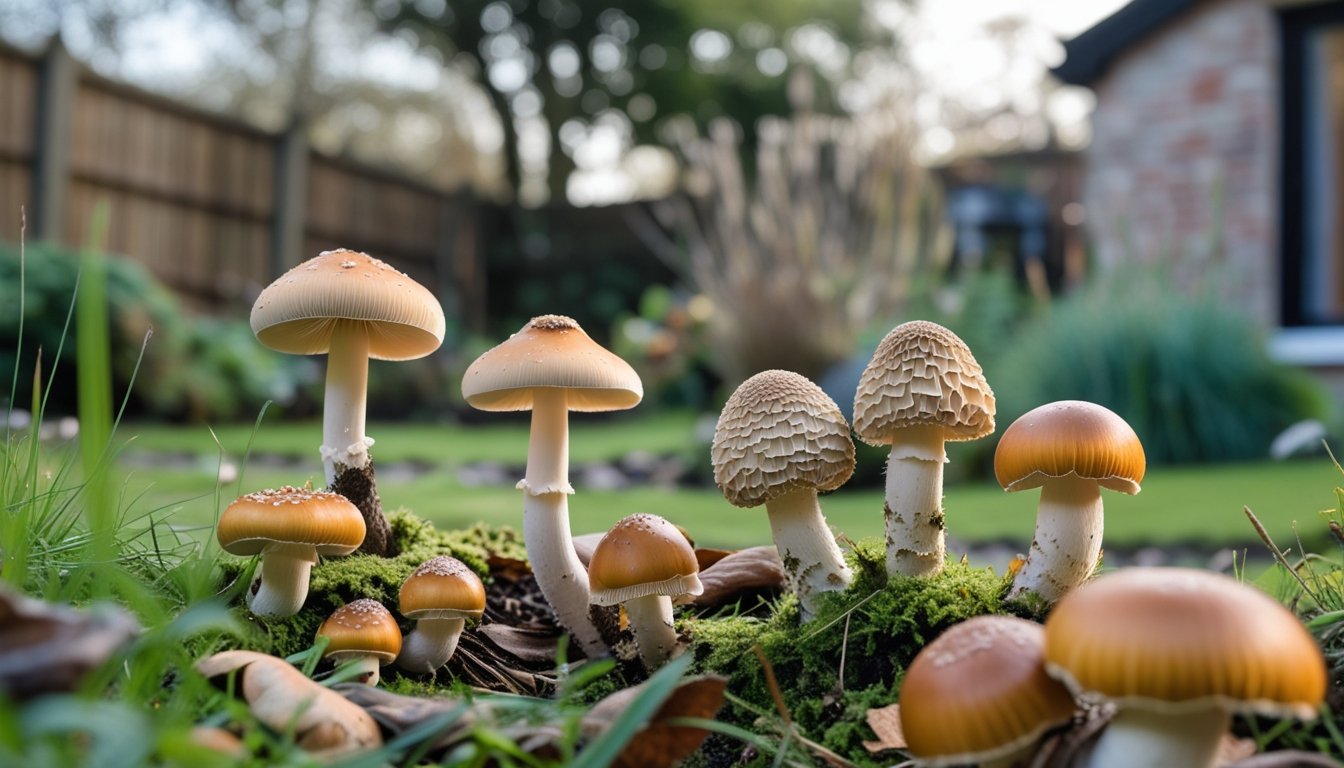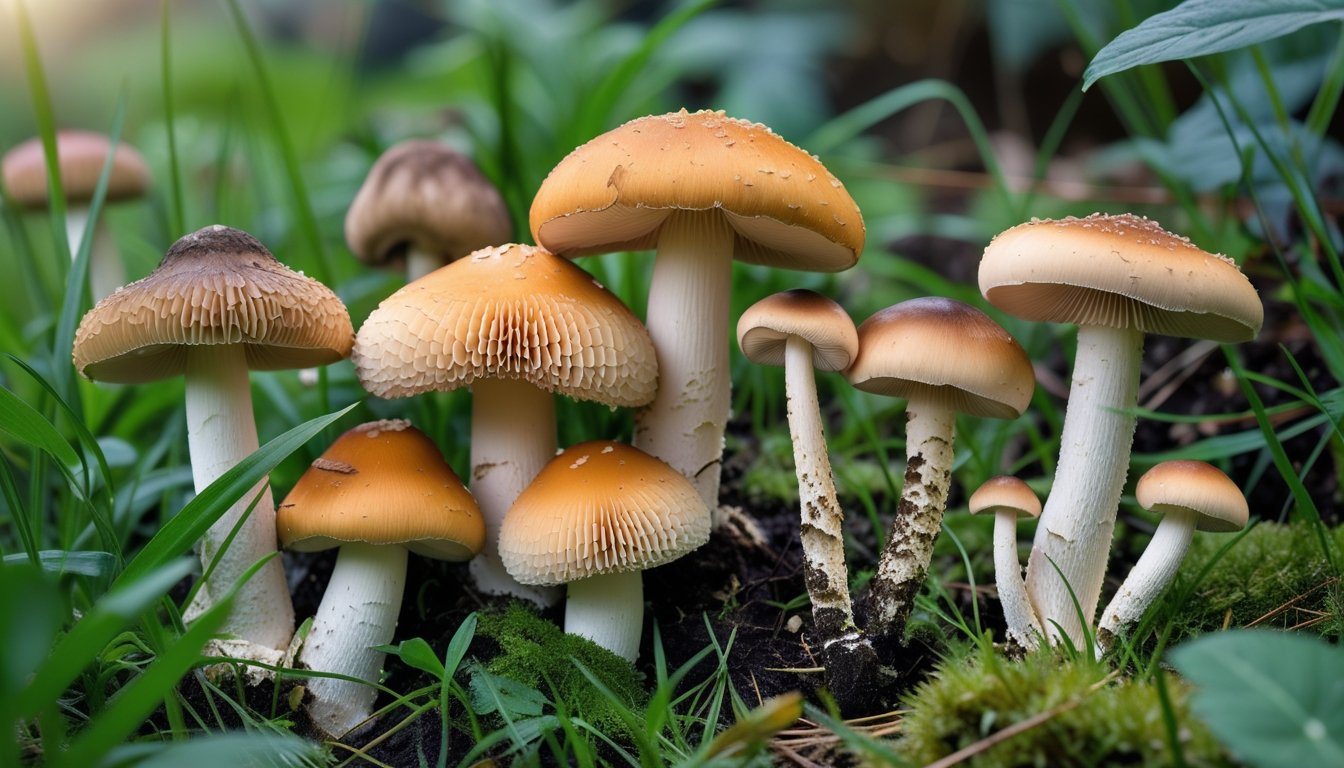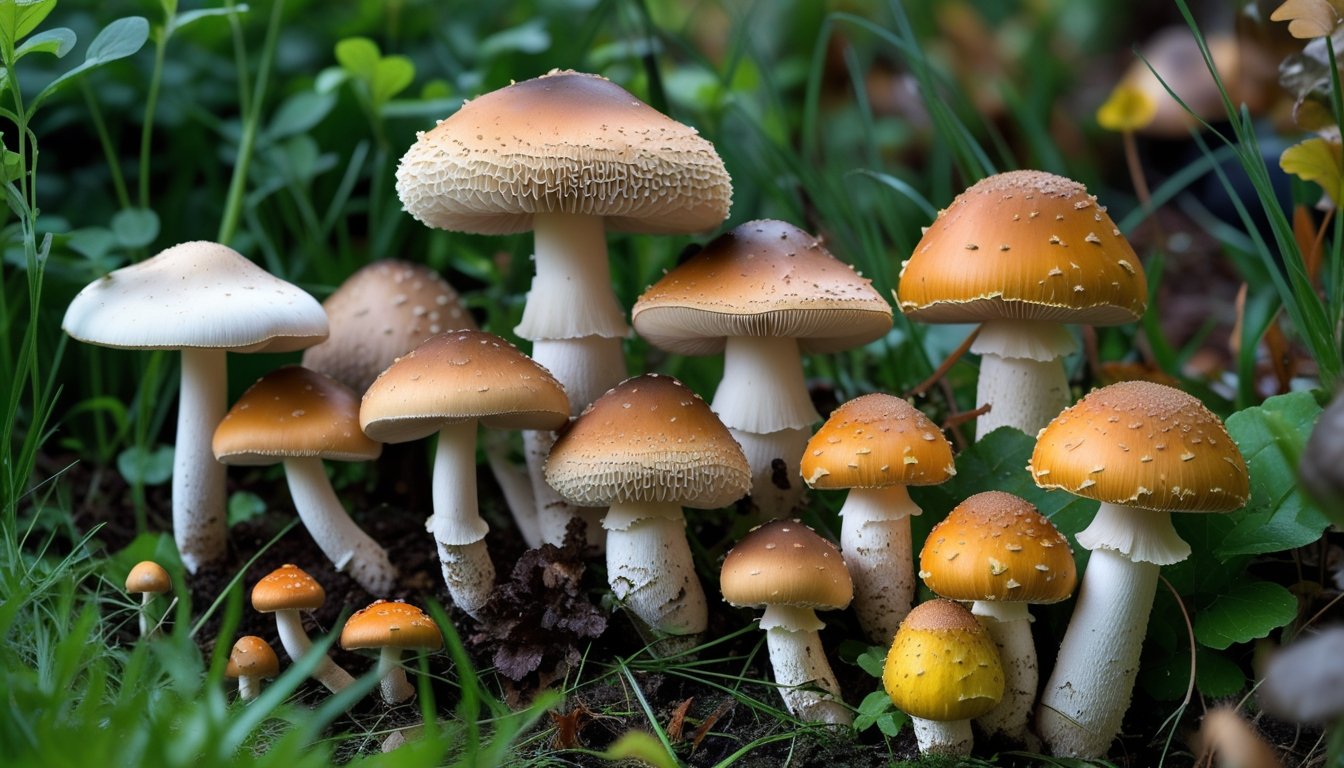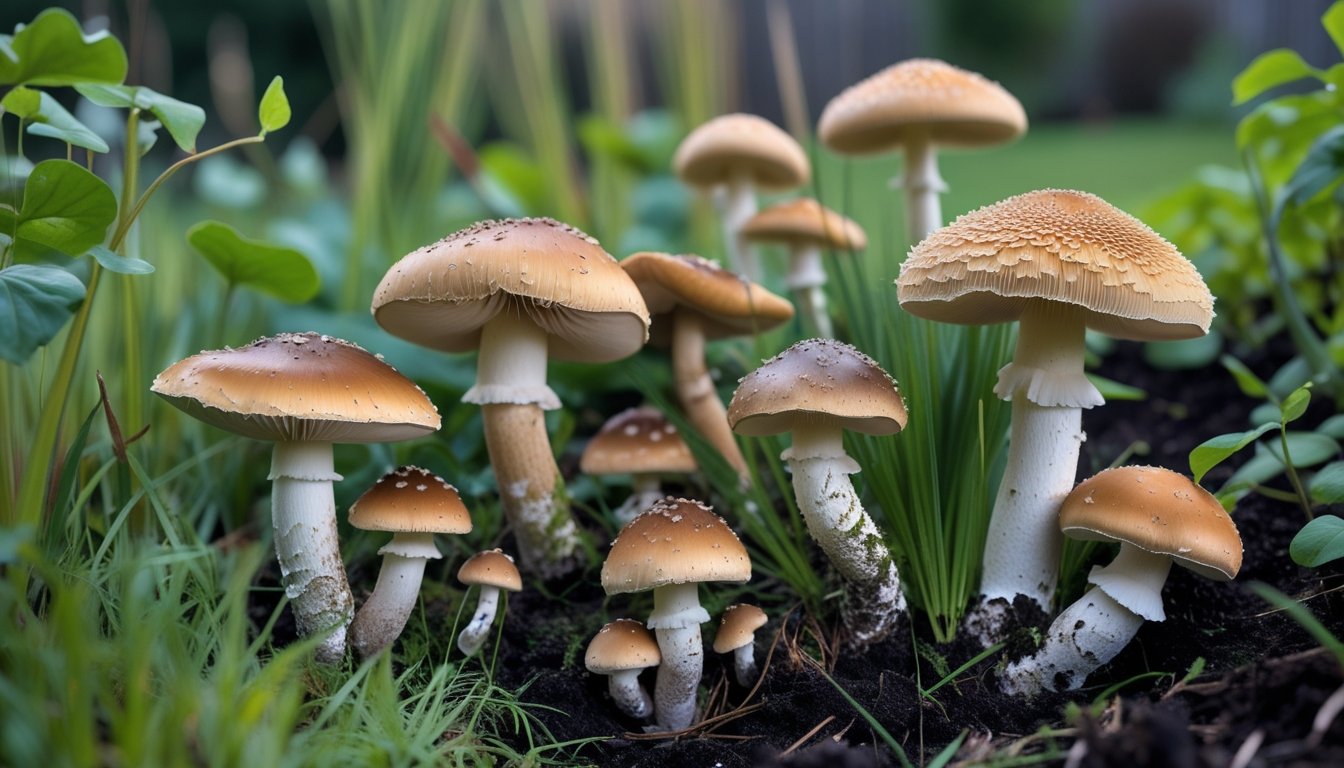Late updated: 31 Oct 2025 09:10
Written by: Emily Thornton
Wild Edible Fungus For UK Gardens: A Guide For Beginners
The allure of a thriving garden full of edible treasures is undeniable, and for UK gardeners, wild fungi offer a unique and rewarding addition to their horticultural pursuits. With around 15,000 species of wild fungi in the UK, these organisms not only enhance biodiversity but also provide culinary delights when properly identified. Understanding how to recognise and cultivate these valuable fungi can transform your garden into a source of both beauty and nourishment.

Many of these wild mushrooms are well-suited to the UK's cool, temperate climate, thriving in garden spaces ranging from damp woodlands to well-drained beds. Some edible varieties, like the common puffball or the field mushroom, can be integrated seamlessly into your plant beds and forested areas. Their presence indicates a healthy ecosystem, underscoring the symbiotic relationships between fungi and other garden elements.
Nevertheless, distinguishing between edible and toxic mushrooms is vital. Misidentification can lead to serious consequences, which is why it is important for us to always rely on multiple identification sources before including them in our meals. Equipped with reliable knowledge, we can safely enjoy foraging and incorporating these wild fungi into our cooking.
Key Takeaways
- UK gardens can host edible wild mushrooms to enhance biodiversity.
- Correct identification of fungi is crucial for safe consumption.
- UK’s climate supports the growth of various edible wild mushrooms.
Key Wild Edible Fungi Suitable For UK Gardens

Cultivating wild edible fungi in UK gardens can provide a fresh and natural food source. Certain species thrive well and add an interesting element to home gardening.
Jelly Ear (Auricularia auricula-judae)
Jelly Ear mushrooms, known scientifically as Auricularia auricula-judae, are commonly found on elder trees and often cultivated in gardens with sufficient shade. These fungi have a unique ear-like shape and a gelatinous texture when fresh. They thrive in moist conditions, making them suitable for UK gardens with proper watering.
In British cuisine, Jelly Ears are valued for their texture rather than taste, providing a slight crunch. They can be added to soups and stir-fries. Cultivating them involves ensuring they have plenty of decaying wood and damp environments. It's essential to identify them correctly, as their similarity to other species may lead to confusion.
Shaggy Inkcap (Coprinus comatus)
The Shaggy Inkcap, or Coprinus comatus, is easily recognisable thanks to its tall, cylindrical cap covered in scales. This fungus prefers grassy areas and can emerge surprisingly quickly after rain. However, these mushrooms should be harvested young, as they transform quickly and dissolve into an inky liquid.
In garden settings, they require a nutrient-rich substrate to flourish. They're wonderfully edible when cooked and are often used in sauces and risottos. Their delicate flavour is lost if overcooked, so it's best to prepare them fresh. It’s crucial to differentiate them from their toxic lookalikes by their distinctive shaggy appearance.
Giant Puffball (Calvatia gigantea)
Calvatia gigantea, known as the Giant Puffball, is a favourite among foragers due to its impressive size and culinary versatility. These fungi can grow to remarkable dimensions and are typically found in meadows and woodland edges. For gardens, they need open spaces with plenty of organic matter in the soil.
When harvested young and white inside, they are perfect for culinary use. Their mild flavour and substantial texture make them suitable for grilling, frying, or even making soups. Puffballs are relatively easy to cultivate, but they should be picked before they turn yellow or brown to avoid loss of quality.
Hedgehog Fungus (Hydnum repandum)
The Hedgehog Fungus, or Hydnum repandum, gets its name from the unique spines or "teeth" under its cap instead of gills. These fungi prefer woodland settings and thrive in sandy, well-drained soils, which makes them a great candidate for certain garden environments in the UK.
This edible mushroom has a nutty and sweet flavour, often sought after by gourmet chefs. They pair well with game or can be added to rich sauces. Cultivating Hedgehog Fungus demands attention to soil quality and maintaining a symbiotic relationship with nearby trees. Identifying them correctly is vital, distinguished by their pale colour and characteristic spines.
Additional Noteworthy Edible and Cautionary Garden Fungi

Many fungi can grace UK gardens, both edible and cautionary. Understanding the characteristics of certain species ensures the safe enjoyment of mushroom foraging and identification.
Chicken of the Woods (Laetiporus sulphureus)
Chicken of the Woods is known for its striking orange and yellow shelf-like brackets. Typically found growing on hardwood trees such as oak, it is valued for its rich, meaty texture. Its appearance can vary, but the vivid colours and overlapping formation are key features. Importantly, while edible, some individuals may experience gastric upset after consumption. Always cook well before eating. It's crucial to avoid specimens growing on yew, as this can lead to toxicity.
Dryad’s Saddle (Cerioporus squamosus)
Dryad’s Saddle, or Pheasant Back Mushroom, is recognised by its large, fan-shaped cap with distinctive brown scales. Found on dead wood and stumps, it emits a pleasant melon-like aroma. Young specimens are tender and edible, though they become tough with age. It's crucial to properly identify this edible mushroom to prevent mistaking it with other potentially harmful fungi. Use it in soups or as a meat substitute, enhancing our culinary adventures.
Shaggy Parasol (Chlorophyllum rhacodes)
The Shaggy Parasol is a medium-sized mushroom identifiable by its shaggy cap and white spores. It thrives in gardens, woods, and parks. While edible, it can cause digestive issues in some people. We advise trying a small portion initially. The cap is best for cooking, possessing a pleasant nutty flavour when cooked. Caution is paramount due to its resemblance to the toxic Chlorophyllum molybdites.
Scarlet Elf Cup Species (Sarcoscypha coccinea & Sarcoscypha austriaca)
Scarlet Elf Cups are notable for their vibrant red fruiting bodies that can brighten winter walks. They grow on decaying wood and leaf litter. Although usually regarded as edible, their culinary value is low compared to other species. Utilised more for decorative purposes in dishes, they pose no significant toxicity risk when consumed. They add a splash of colour to our foraged finds.
Toadstool and Toxic Lookalikes
Toadstools, with species like Amanita muscaria, are often hazardous, demanding careful attention during identification. The characteristic red cap with white specks is striking yet signals caution. Importantly, mushrooms such as the false parasol can be dangerous if misidentified. Familiarising ourselves with these lookalikes reduces the potential for dangerous mistakes, adding a layer of safety to our foraging activities.
Foraging Best Practices and Safety
Foraging for fungi requires meticulous care. Always use multiple reliable identification guides and consult experienced foragers. Avoid over-harvesting to preserve ecological balance. It's vital to practise sustainable foraging. Employing basic hygiene like washing and cooking mushrooms thoroughly minimises health risks. Let's always prioritise knowledge and safety when exploring the bounty of our gardens.
Frequently Asked Questions

In the UK, cultivating wild edible fungi in gardens involves identifying safe species, understanding growing conditions, and following legal guidelines. We explore some common species and provide tips for safe foraging and cultivation.
What are the common types of edible mushrooms that can be cultivated in UK gardens?
Edible mushrooms suitable for UK gardens include species like oyster mushrooms, shiitake, and chanterelles. These varieties thrive well and are popular for their flavours. Oyster mushrooms are especially renowned for their adaptability to different growing mediums, while shiitake are valued for their rich taste.
How can one safely identify edible fungi in the wild in the UK?
To safely identify edible fungi, using multiple reputable guides is essential. Noting the colour, shape, and habitat of mushrooms helps distinguish them. Always consult an expert if uncertain. Never consume a wild mushroom unless completely sure of its edibility, as many edible types have toxic lookalikes.
What are the ideal conditions for growing edible mushrooms outdoors in the UK climate?
UK gardens offer a temperate climate ideal for mushroom cultivation. Mushrooms generally require shaded areas with high humidity. They often grow well on logs, straw, or wood chips. Monitoring moisture and temperature ensures healthy development. It’s important to recreate their natural forest environment as much as possible.
Which edible mushrooms are most suitable for beginners to grow in a UK garden?
For beginners, oyster and button mushrooms are the go-to choices. These types are forgiving and tend to grow rapidly under the right conditions. Oyster mushrooms, particularly, can adapt to various substrates, making them an excellent choice for novice producers.
Are there any legal restrictions on foraging for mushrooms in the UK?
While foraging for personal use is generally permitted in the UK, specific locations may have restrictions. Foraging in protected areas or for commercial purposes often requires consent. Understanding local bylaws and landowner permissions ensures responsible and legal foraging.
How should one harvest edible mushrooms from their garden to ensure continued growth?
To sustainably harvest mushrooms, cut them at the base with a clean knife. Avoid pulling, which can harm the mycelium. Allow time for the mycelium to recover and re-fruit. Regular, careful harvesting encourages new mushroom flushes, maintaining ongoing yields from the same mycelial base.
